How to Identify a Male or Female Lutino Cockatiel: Easy Guide
Discover how to distinguish between male and female Lutino Cockatiels, exploring their differences in behavior, appearance, and more.
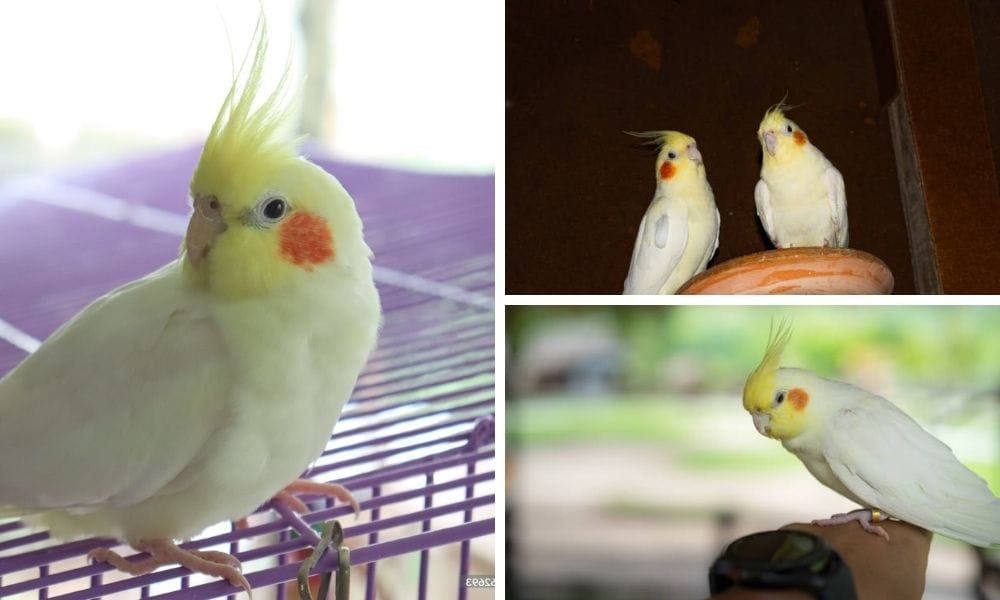
Cockatiels are among the most cherished pet birds in the world, and the lutino cockatiel, with its striking white plumage, stunning orange cheek patches, and red eyes, is a particularly beloved color mutation. If you’re a first-time bird owner or an avian enthusiast looking to add a lutino cockatiel to your family, distinguishing between a male and a female can be a fascinating yet challenging task. This article will guide you through the nuances of identifying the gender of these beautiful birds.
Key Takeaways:
- Understanding the physical and behavioral differences between male and female lutino cockatiels is crucial for proper care and breeding.
- Male lutino cockatiels often exhibit more vibrant colors and distinct behavioral patterns compared to females.
- DNA testing is the most reliable method for determining the sex of a lutino cockatiel, especially in cases where physical and behavioral signs are ambiguous.
- The average wingspan of lutino cockatiels measures between 30-35 cm, which is important for potential pet owners to consider regarding space requirements.
Lutino cockatiels are the second cockatiel mutation to be discovered, characterized by their stunning yellow and white feathers and lack of the grey color found in the common wild species. The lutino gene is responsible for this unique coloration, which is a result of albinism that eliminates the grey pigment but leaves the yellow and orange colors intact. This mutation can make sexing these birds more challenging than other parrots with more obvious color variations.
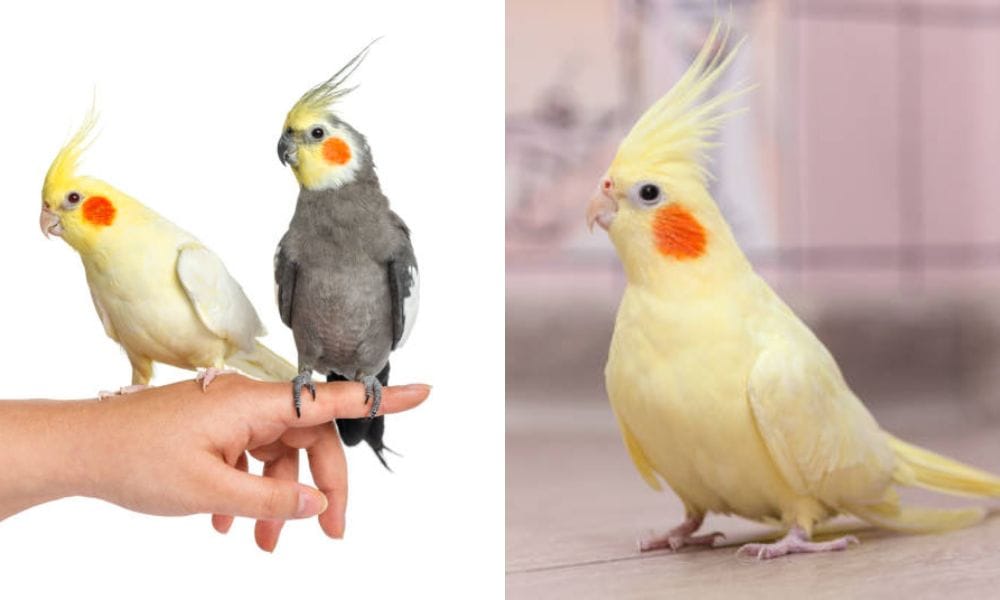
For those interested in breeding, knowing the sex of your lutino cockatiel is essential. While both males and females can make equally affectionate pets, their behavior, especially during the breeding season, can differ significantly. Males tend to be more vocal and may whistle or talk more frequently, while females can be quieter but may exhibit nesting behaviors when they reach sexual maturity.
Physical Differences
When it comes to identifying the sex of lutino cockatiels, there are a few physical signs to watch for. Male lutino cockatiels often have brighter yellow heads and more vivid orange cheek patches than females. The male’s body is typically a solid, bright yellow or white, while females may have a more muted yellow coloration with subtle bars or spots on the underside of their tail feathers and wings, remnants of the patterns seen in wild cockatiels. Lutino cockatiels are also known for their striking yellow or off-white feathers, which contribute to their charm and popularity among pet enthusiasts.
Another sign to look for is the color of the feathers under the wings. Males usually have solid-colored feathers in this area, while females may have a pattern of spots or bars. Females may also have yellow spots on the underside of their flight feathers as they mature. However, these differences can be subtle and may not be fully apparent until the bird reaches maturity, which is typically around six to nine months of age.
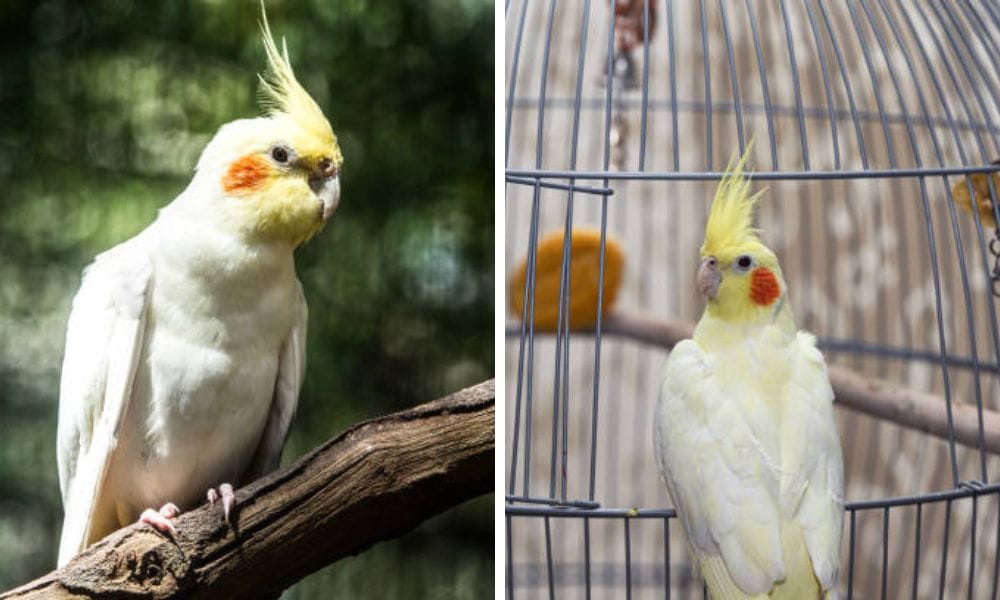
Behavioral Clues
Behavior can also be a key indicator of a lutino cockatiel’s sex. Males are known to be more vocal and may exhibit a wider range of sounds, including mimicking common household noises. They can also learn a few words and phrases through diligent training. They are also more likely to engage in courtship behaviors such as singing, strutting, and spreading their wings to show off their plumage. On the other hand, females are generally less vocal and may hiss or display a more aggressive posture when they feel threatened or are protecting their territory.
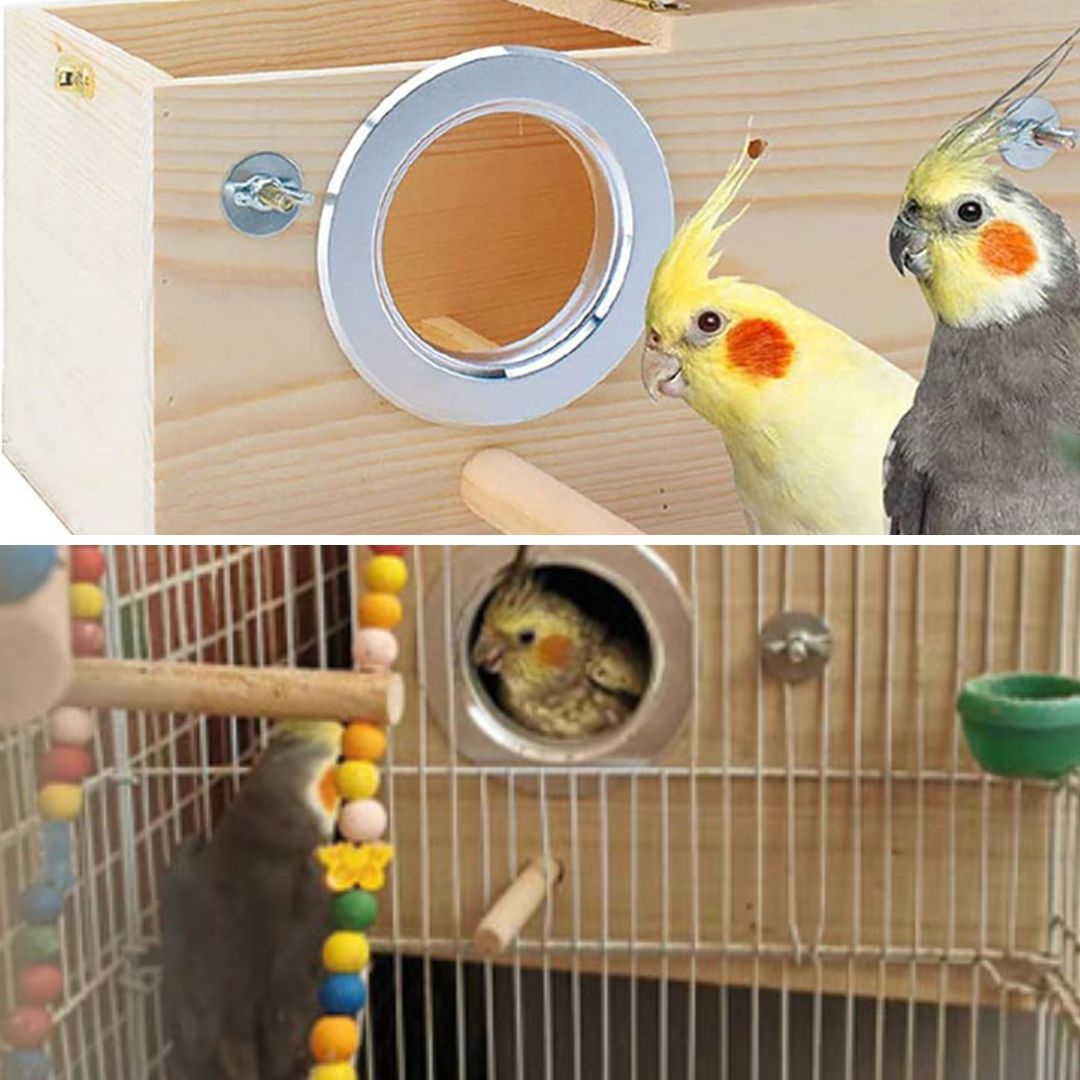
During the breeding season, females may exhibit nesting behaviors, such as shredding paper or looking for secluded spots in the cage or around the house. They might also become more territorial around their nest box if one is provided. Observing these behaviors over time can give you a clearer indication of your bird’s sex.
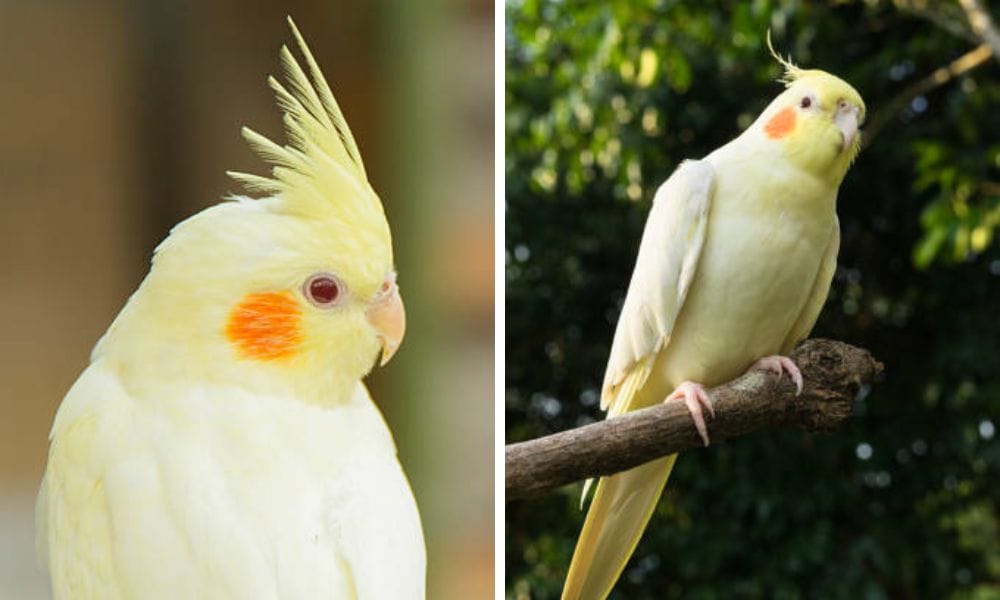
Understanding Lutino Mutation in Cockatiels
Lutino cockatiels are a captivating variety that exhibit a stunning yellow or white body with bright red eyes, a result of the lutino mutation which is a genetic trait that eliminates the grey color in their feathers. This mutation is part of a larger group of color mutations in cockatiels that include albino, pied, cinnamon, and pearl. The lutino mutation specifically affects the melanin production, leading to their distinctive coloration. A similar variation is the lutino pearl, which shares some traits with lutino cockatiels but has distinct colorings and unique plumage. For first-time bird owners, it’s important to note that these mutations do not affect the health or temperament of the birds; they simply add to the aesthetic diversity of these charming smaller birds.
The lutino mutation can be bred, and aviculturists like Cliff Barringer have worked to understand and perfect the breeding process to produce healthy and vibrant lutinos. When breeding for specific traits such as the lutino mutation, it’s essential to have a good understanding of genetics and the inheritance patterns of these color mutations. Breeders often keep detailed records and may work for years to produce a bird with the desired traits. It is also crucial to know which other mutations can be safely bred with lutino cockatiels to avoid potential health issues. The rarity and beauty of these birds make them highly sought after in the world of aviculture, and owning a lutino cockatiel can be a source of pride for any bird enthusiast.
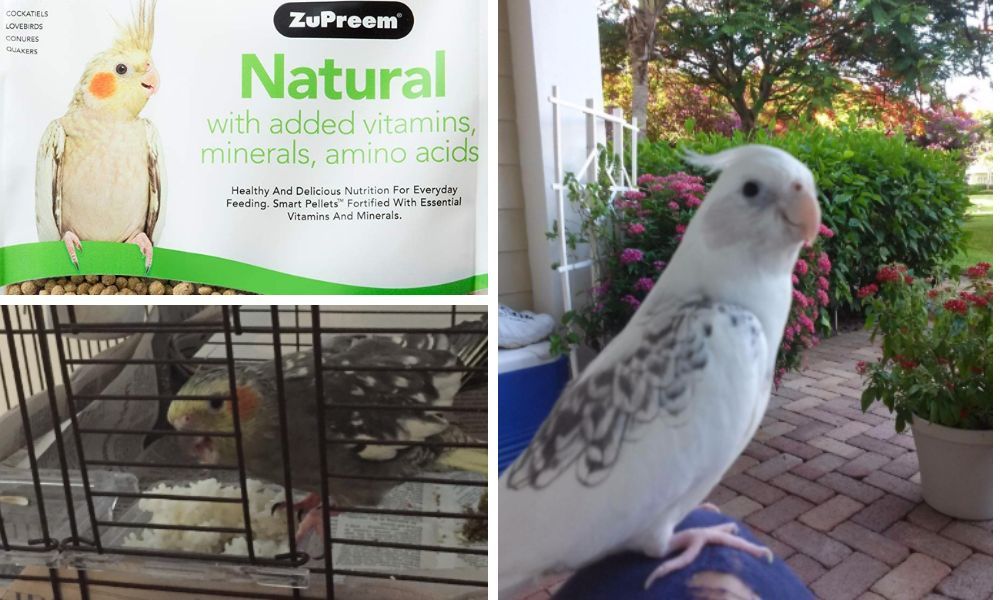
Personality of Lutino Cockatiels
Lutino cockatiels are renowned for their friendly and affectionate personalities, making them a favorite among bird enthusiasts. These birds thrive on social interaction, not just with their human companions but also with other birds. Their playful and curious nature means they are always exploring their surroundings, making them a joy to watch and interact with.
Despite being relatively quiet compared to other members of the parrot family, lutino cockatiels can still learn to talk and whistle, adding to their charm. They are intelligent and trainable, often picking up new tricks and commands with ease. However, it’s important to note that they can be a bit nippy, especially if not properly socialized. With consistent training and positive reinforcement, this behavior can be managed effectively.
In summary, the personality of lutino cockatiels can be described as:
- Friendly and affectionate
- Playful and curious
- Intelligent and trainable
- Social and outgoing
- Relatively quiet
- Nippy (but manageable with proper training)
Baby Cockatiels: Development and Care
Caring for baby cockatiels, or chicks, requires special attention to ensure they grow up healthy and strong. These tiny birds are born blind and helpless, relying entirely on their parents for food and warmth. Around 10-14 days old, they begin to develop their feathers and open their eyes, marking the start of their journey towards independence.
By the time they are 3-4 weeks old, baby cockatiels start to venture out of the nest and learn to fly. This is a critical period where they need a diet rich in protein and calcium to support their rapid growth. They are usually fully weaned and independent by 6-8 weeks old, ready to explore the world on their own.
To ensure the healthy development of baby cockatiels, provide:
- A warm and safe environment
- A diet rich in protein and calcium
- Regular socialization and interaction
- Proper hygiene and cleaning
- Regular veterinary check-ups
Health Considerations for Lutino Cockatiels
Lutino cockatiels are generally robust birds, but they can be prone to certain health issues. Respiratory problems, such as bronchitis and pneumonia, are common due to their sensitive respiratory systems. Feather plucking, often caused by stress, boredom, or nutritional deficiencies, is another issue to watch for.
Beak problems, including overgrowth or cracking, can arise from nutritional deficiencies or genetic factors. Additionally, foot problems like bumblefoot or foot abscesses can occur due to poor hygiene or genetic predispositions.
To keep your lutino cockatiel healthy, ensure:
- Regular veterinary check-ups
- A balanced and nutritious diet
- A clean and safe environment
- Regular socialization and interaction
- Proper hygiene and cleaning
Diet and Enrichment for Lutino Cockatiels
When it comes to caring for lutino cockatiels, diet is paramount. These birds thrive on a varied diet that includes high-quality pellets, a mix of fruits, and vegetables to ensure they receive all the necessary nutrients. First-time bird owners should be aware that lutino cockatiels, like all cockatiels, enjoy foraging and appreciate a diet that challenges their inquisitive nature. Foods like bell peppers, leafy greens, and small pieces of fruit can be offered, and it’s important to avoid avocado and chocolate, which are toxic to birds. Regularly introducing new foods can help keep your lutino cockatiel healthy and mentally stimulated. Additionally, choosing the correct cage size is crucial for their comfort and safety, ensuring they have enough space to move and play.
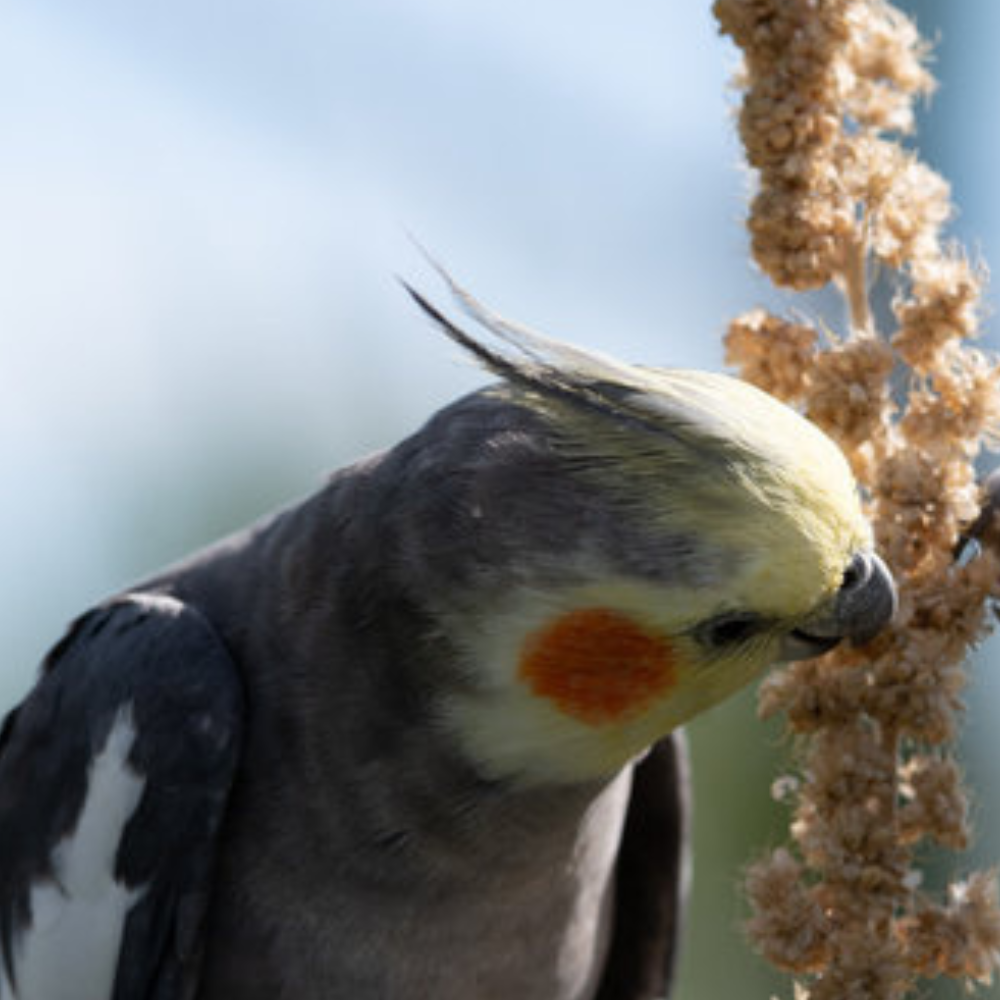
Enrichment is another crucial aspect of caring for these intelligent birds. Lutino cockatiels are active and enjoy playing with toys, especially those that make noise like bells or are challenging like foraging toys. Providing a variety of toys and rotating them weekly can help prevent boredom and encourage natural behaviors such as climbing and chewing. Training your lutino cockatiel to perform tricks or to respond to commands can also be a great way to engage their minds.
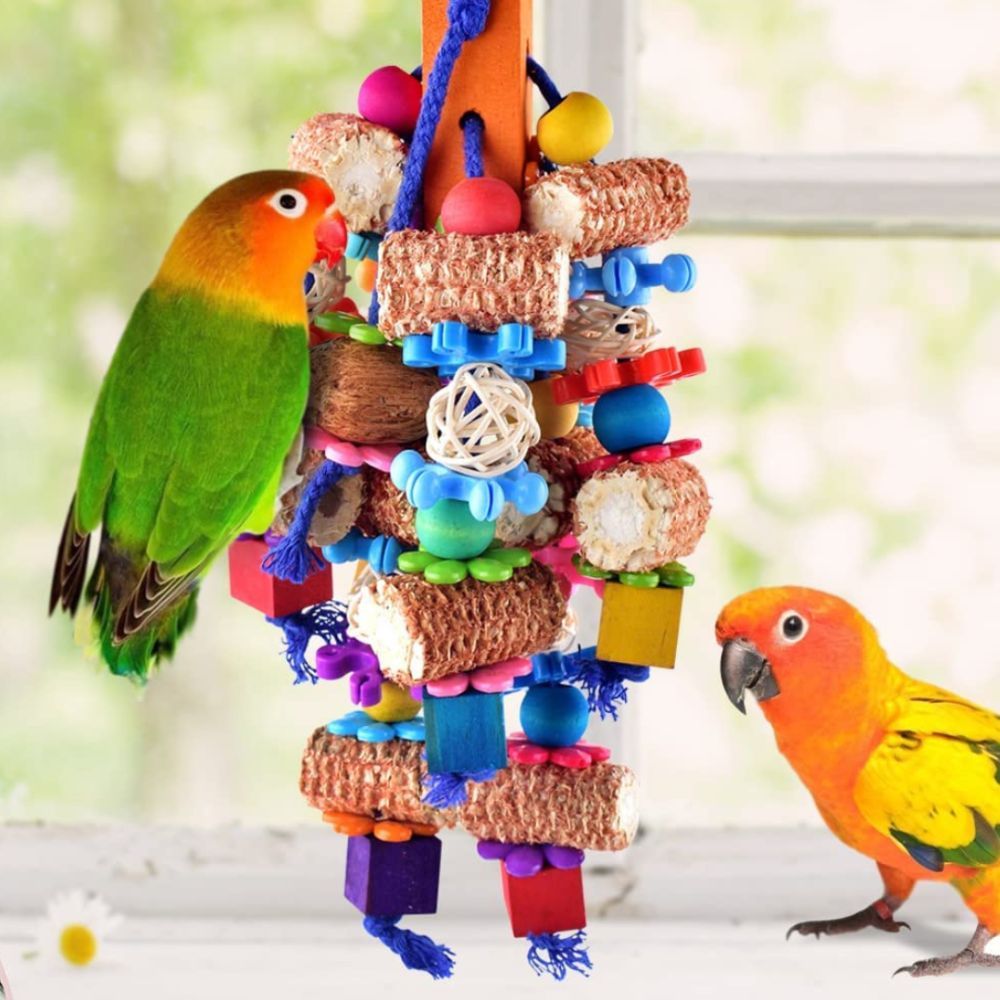
Remember, a stimulated cockatiel is a happy cockatiel, and incorporating these enrichment strategies can make a significant difference in their overall well-being..
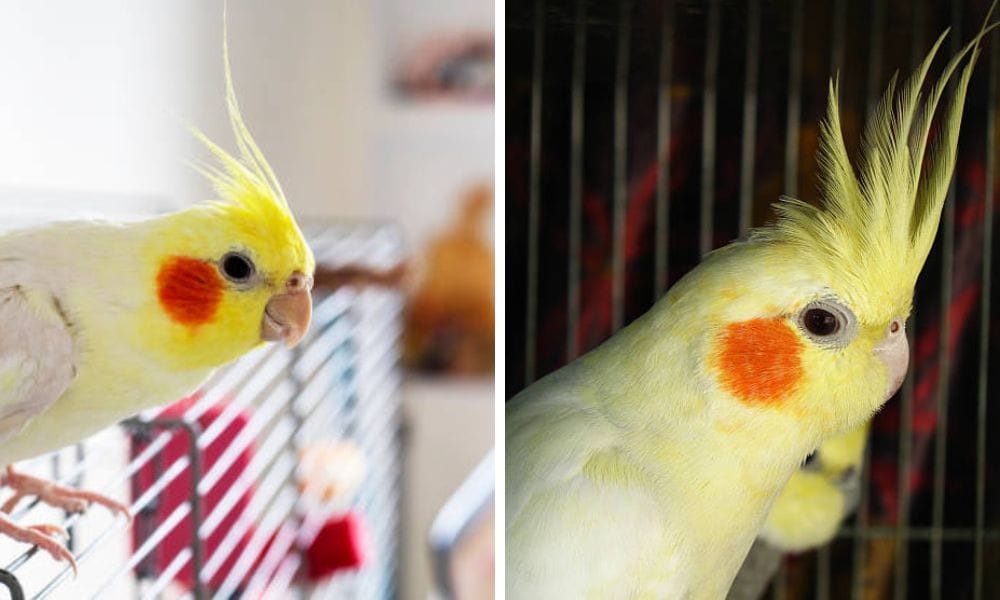
Housing and Environment for Lutino Cockatiels
Providing a suitable living environment is crucial for the well-being of lutino cockatiels. A spacious and well-ventilated cage is essential, with a minimum size of 2x3x4 feet to allow for ample flight and exercise. The bar spacing should be around 1/2 to 5/8 inches to prevent escape and injury.
Lutino cockatiels benefit from a variety of perches to exercise their feet and legs, as well as a range of toys to keep them entertained and mentally stimulated. Maintaining a temperature range of 65-75°F (18-24°C) and a humidity level of around 50-60% is also important for their comfort.
In summary, lutino cockatiels require:
- A spacious and well-ventilated cage
- A variety of perches and toys
- A temperature range of 65-75°F (18-24°C)
- A humidity level of around 50-60%
- Regular cleaning and maintenance
By following these guidelines, you can create a comfortable and enriching environment for your lutino cockatiel, ensuring they lead a happy and healthy life.
DNA Testing: The Definitive Method
While physical and behavioral signs can provide clues, the only way to be absolutely certain of your lutino cockatiel's sex is through DNA testing. This can be done by a veterinarian or an avian genetic testing lab. A small sample of blood, feathers, or a cheek swab is collected and analyzed to determine the bird's sex. This method is highly recommended for owners who need to know their bird's sex for breeding purposes or for those who have birds with ambiguous physical characteristics.
Caring for Your Lutino Cockatiel
Regardless of whether you have a male or female lutino cockatiel, providing a healthy and stimulating environment is crucial for their well-being. A spacious cage, a variety of toys, and regular interaction with their human family members will keep them happy and engaged. Lutino cockatiels have long tails, which should be considered when providing perches and toys. A balanced diet consisting of seeds, pellets, and fresh fruits and vegetables will ensure they receive all the necessary nutrients. Regularly watching and interacting with your lutino cockatiel will not only help you understand their sex but also create a strong bond between you and your feathered friend.
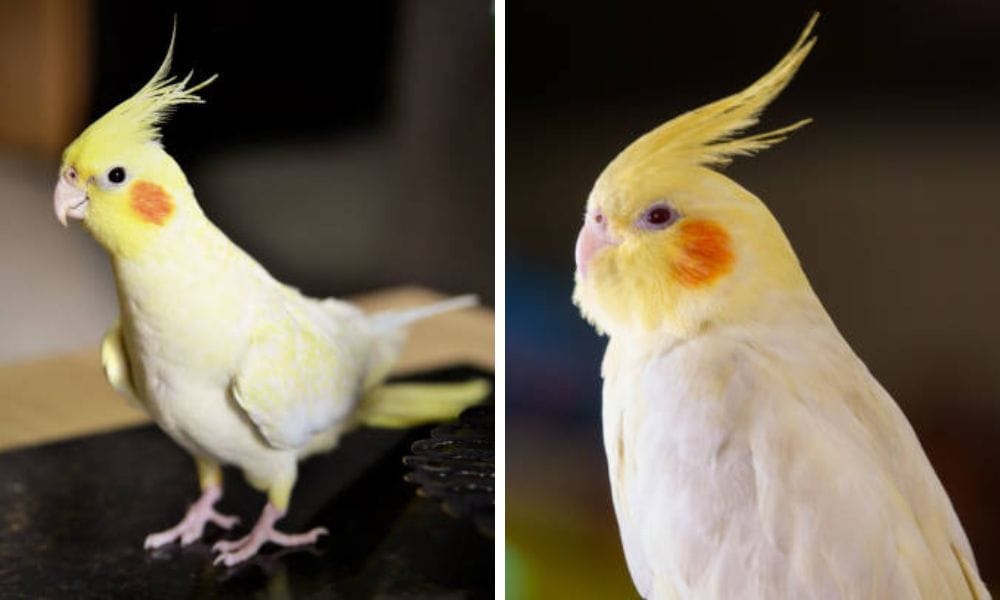
Summary
Identifying the sex of a lutino cockatiel can be a nuanced process, but by paying attention to physical characteristics, behavioral patterns, and opting for DNA testing when necessary, you can determine whether your pet is male or female. Remember that both sexes can make delightful companions, and the most important factor is the love and care you provide to your lutino cockatiel.
FAQ Section
Q: At what age can you typically determine the sex of a lutino cockatiel by physical characteristics? A: Physical characteristics that may indicate the sex of a lutino cockatiel usually become apparent when the bird reaches sexual maturity, around six to nine months of age.
Q: Can lutino cockatiels be trained to talk or whistle? A: Yes, especially male lutino cockatiels, which are often more vocal and can be trained to talk or whistle. However, with patience and consistent training, some females may also learn to mimic sounds.
Q: Is it necessary to have a nesting box for my lutino cockatiel? A: A nesting box is not necessary unless you are planning to breed your cockatiels. If you do provide a nesting box for a female, be aware that it may trigger nesting behaviors and territoriality.

